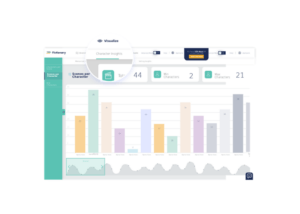
Connect your readers with your characters and your readers will cheer for them. And readers love to cheer for characters. Make your readers feel the sadness, the terror, the happiness your character feels, and you’ll keep them reading.
In a novel, giving your readers someone to cheer for and follow for 300 or so pages might make the difference between the reader dropping your book on the coffee table after chapter one to staying awake late into the night reading until the climax satisfies their need to know what happened to the character.
There are many ways to revise your story to ensure you’re grabbing your reader’s attention and keeping it.
I’ll use StoryTeller to show how to do this. Visuals often make it easier to learn. something new.
A few of the tools Storyteller gives you to help you keep your readers engaged with your characters include:
- Cast of Characters (for entire story and per scene)
- Characters Per Scene
- Scenes Per Character
- Story Arc (for Character Entry and Exit)
![]()
The Cast of Characters
While reviewing your cast of characters to connect your readers to your characters look for:
- Character names that are too similar. There’s nothing more frustrating to a reader if a character is killed and it’s Bill, but there’s also a Bob in the story. If the reader is left wondering which character was actually killed because the names are too similar, they might put your book down.
- Names used for more than one character. Once I gave two minor characters the same first name. One was in an early scene, and one was in a later scene. None of my beta readers nor my editor picked this up because the names were too far apart, but StoryTeller did.
- Any typos in the names. This list will help you catch typos that are hard to find when proofreading. For example: Kristina versus Kristine. Your spell checker won’t find an error, but when you see the names listed together, you can’t miss it.
There are two ways to look at your character list in StoryTeller. The Cast of Characters shows you all the characters in your story. The View Character List shows you the characters in a specific scene.
The Cast of Characters page shows you all of the characters in your novel. Once you’ve confirmed the cast is correct, the other character insights will be updated.
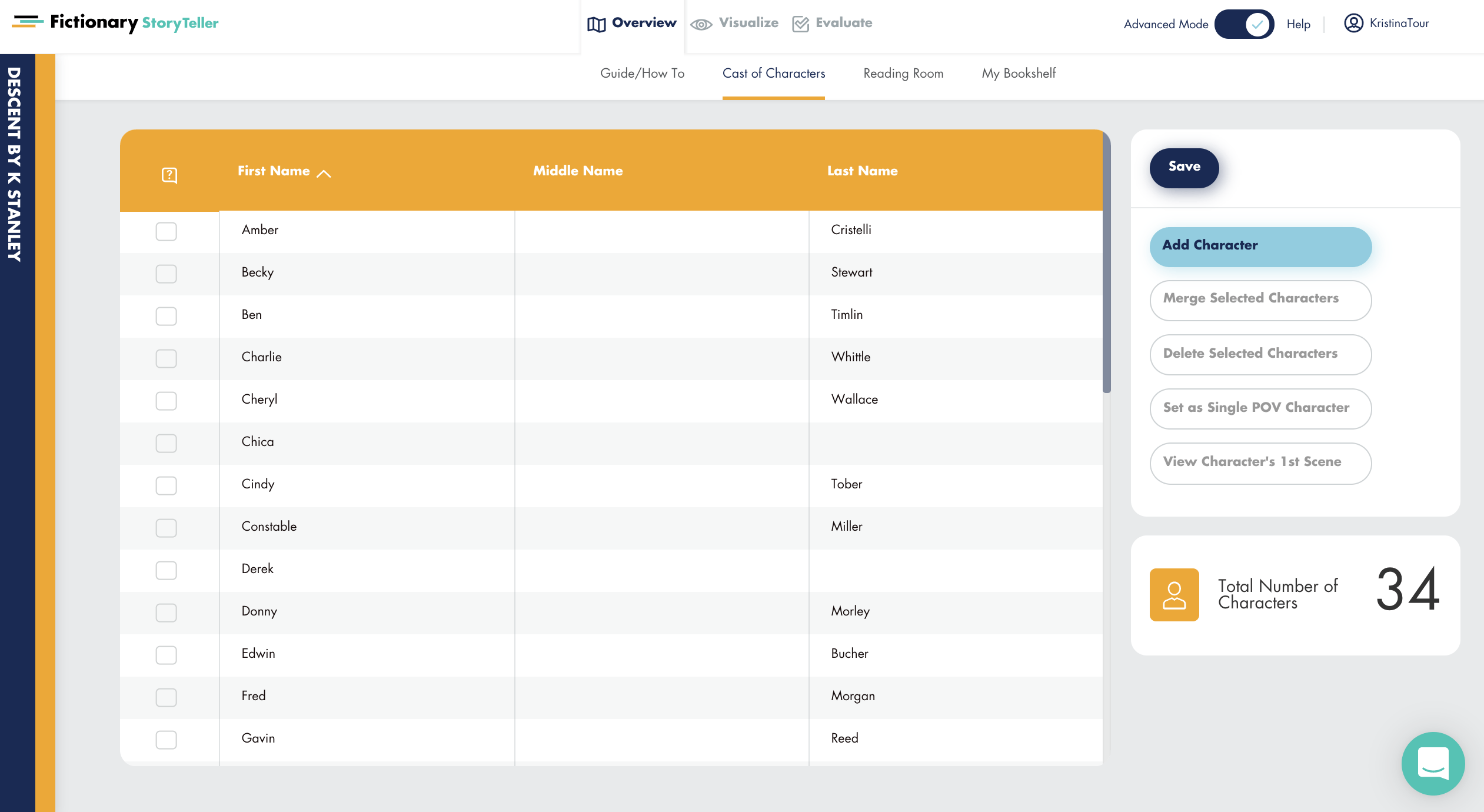
Cast of Characters in Fictionary
Characters per Scene
A character in the scene has an active role. Think of them as being actors in a play when they are onstage.
Characters Mentioned in a Scene
Sometimes a character does not have an active role in a scene but is referred to by another character. This could be in dialogue, thought, a dream, an eMail, or phone conversation.
Why would you do this?
- To remind the reader of a character if you haven’t written about them for a few scenes or chapters
- To show the character through the eyes of another character
- To foreshadow an event that will affect the character
- To give the reader a clue or red herring
- To show the POV character’s goal, personality trait, or attitude
- To keep the antagonist in the reader’s mind if the antagonist doesn’t have any POV scenes.
When you see all the characters mentioned in a scene you can decide whether they should be mentioned or not. Too many mentions might confuse the reader.
StoryTeller automatically links characters to scenes.
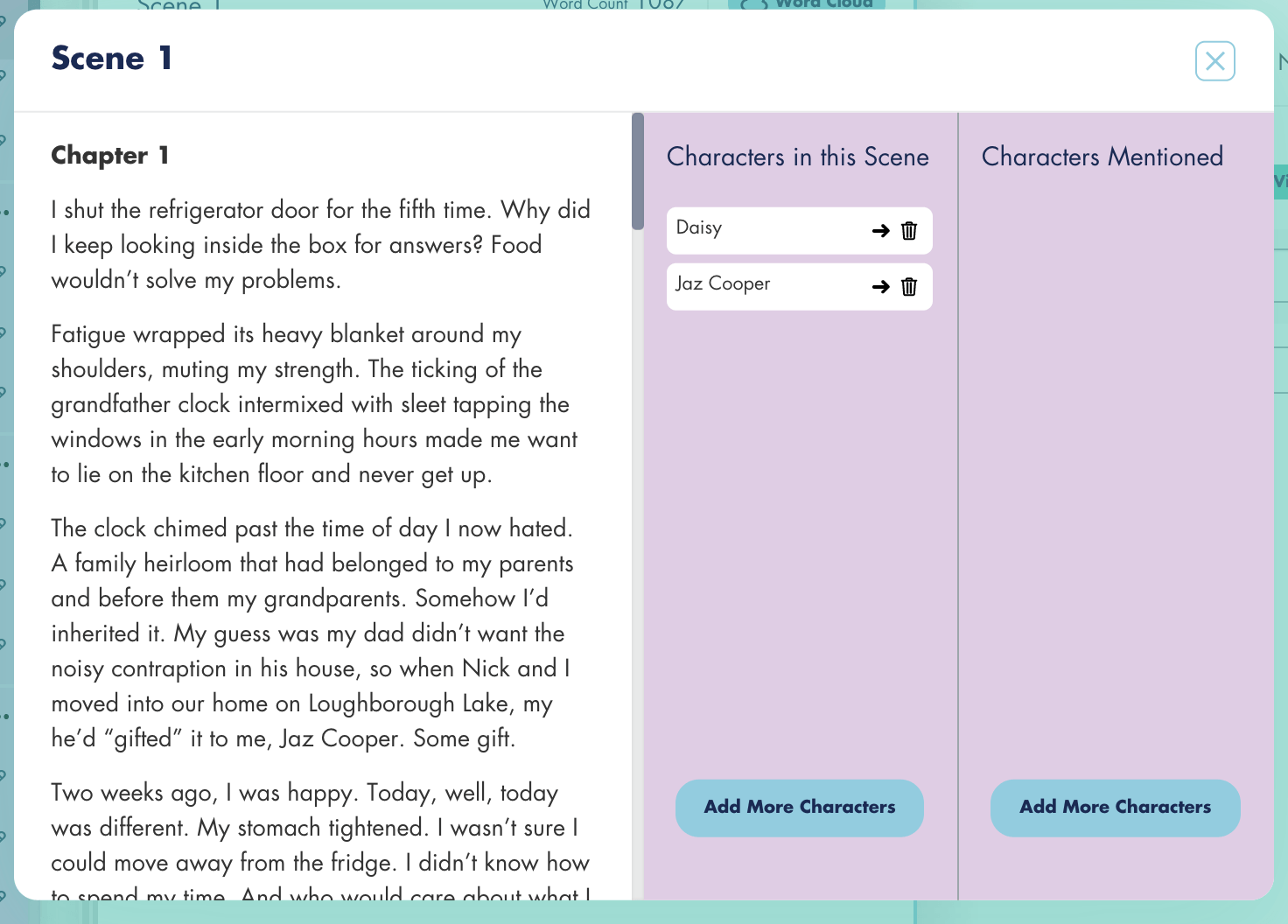
Characters per Scene in Fictionary
To assess whether you have too many characters or too few in a scene you need to know how many characters are in each scene.
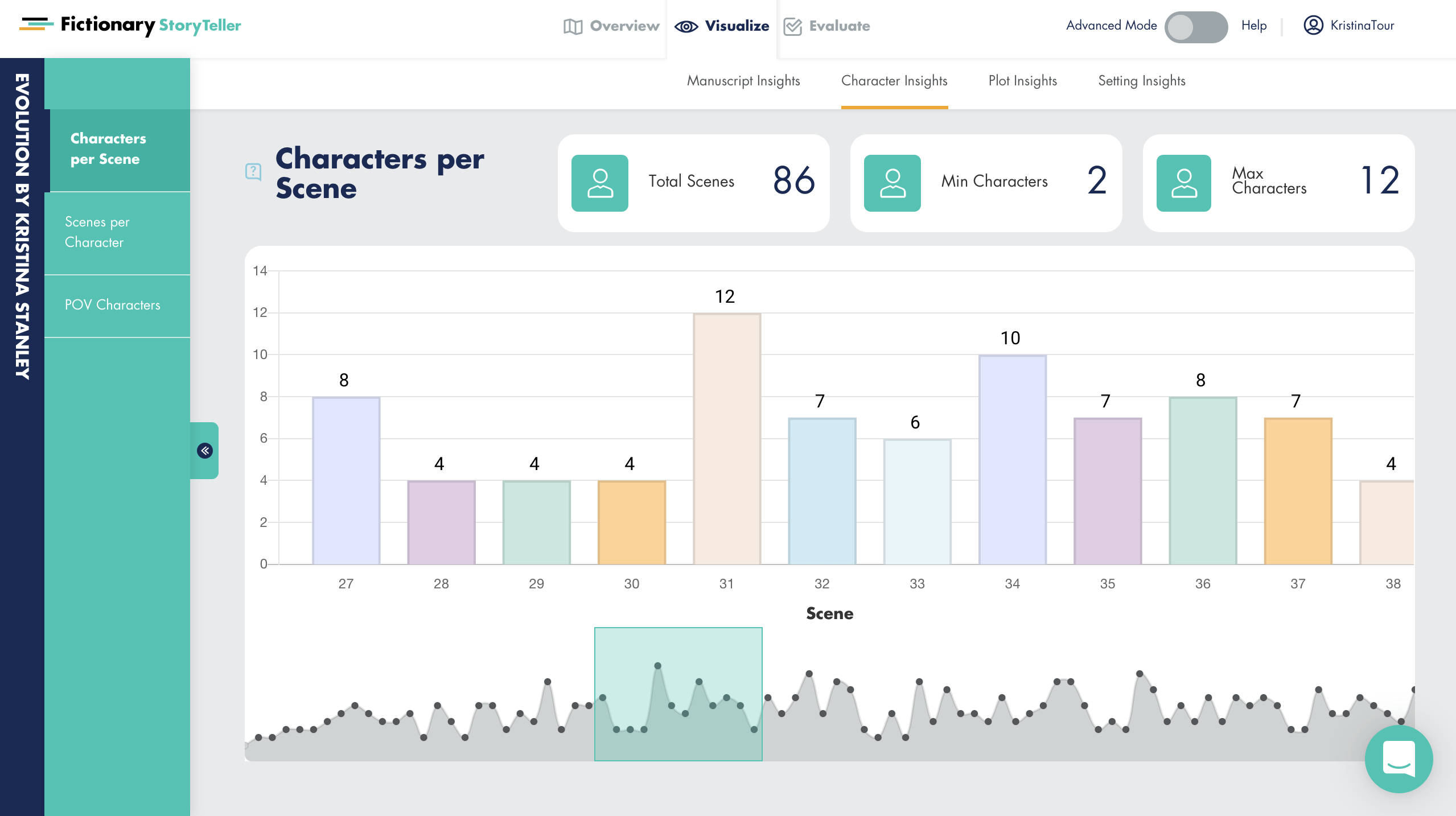
Characters per Scene Insight in Fictionary
![]()
Scenes per Character
The Scenes Per Character insight shows you how many scenes each character is in, the order the characters appear in your story, the total number of characters, the minimum number of scenes a character appears in, and the maximum number of scenes a character appears in.
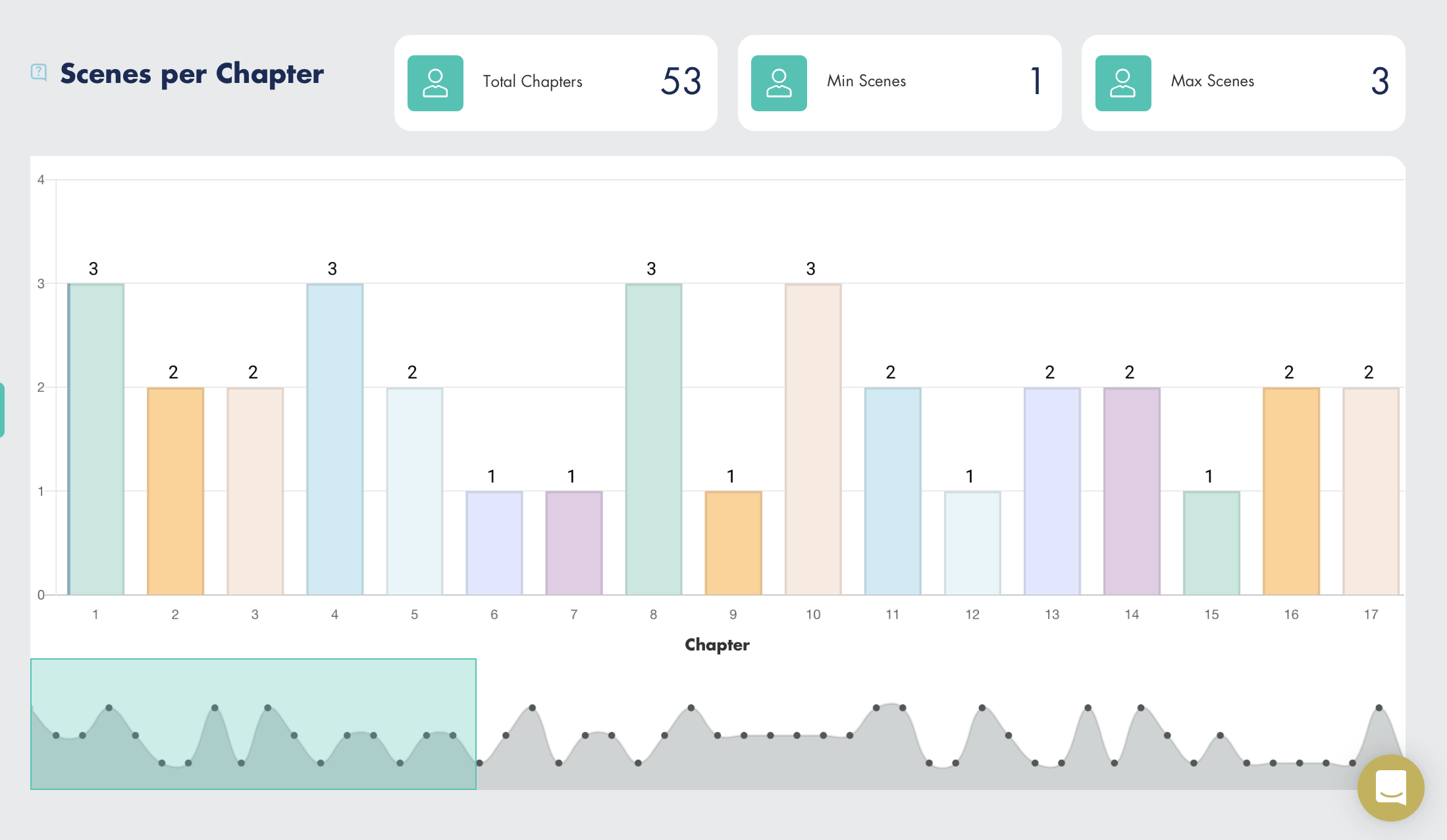
Scenes Per Chapter in Fictionary
![]()
Who Is Your Protagonist?
The most important character to connect your readers to is your protagonist.
Does this character have the majority of scenes? If not, evaluate whether this character should be your main protagonist. If the answer is yes, you can review scenes where the protagonist is not your POV and determine if you can rewrite the scene from his/her point of view.
Jaz Cooper is the protagonist in my WIP Evolution. She’s in the most number of scenes.
Is Your Protagonist Likable?
So you know who your protagonist is. Many writing books declare the reader must like your protagonist. This doesn’t mean everything about your character should be likable.
No one likes a perfect person. On the flip side, even if your character is nasty, is there at least one characteristic your reader can relate to, like or admire? If not, consider creating a likable trait.
When I started writing, I struggled with how to make a character likable. Thinking about what made me like people in real life was difficult to translate into the pages of a novel. How was I to get a reader to like my character?
The Crime Writers’ Association honored me by shortlisting my novel, Blaze. The comment I received from one Debut Dagger judge on the topic of likable characters was:
“The thread with the dog is a clever way of engaging interest and building suspense right from the start, while telling the reader something appealing about Kalin.”
Kalin is the main protagonist in Blaze. In the opening scene, on the run and separated from her dog in a forest fire, Kalin fights for her life. The suspense part: Will she be able to save herself and her dog? The likable part: Her concern for her dog.
Do important characters appear early in your story?
The Scenes per Character insight shows you the order characters appear. You can use this to assess if major characters appear early enough.
Too Many Characters?
The more time a reader spends with a character, the more time, they have to connect with that character. If you have too many characters, the reader doesn’t get enough time with the important characters.
Look for characters that only appear in one scene. Can you cut one? Merge two characters into one character?
![]()
The Story Arc Helps Connect Your Readers to Your Characters
(For Character entry and exit)
Character Arc: How a character changes and grows (or not) throughout a story.
A character’s arc includes when she enters and exits the story.
The moment a character enters a story, her character arc begins.
The first time a character appears, she must be introduced to the reader. This is where you decide how much time you spend on describing her and who she is in the story.
For a major character, put more emphasis on introducing the character.
For a minor character, write as little as possible and still keep the reader engaged and not confused.
You control how the information of a new character is presented. Consider her appearance, how she speaks, what her mannerisms are, her actions, and how she interacts with other characters.
When describing a character for the first time, describe the character so the reader:
- Can conjure up a physical image of the character.
- Understands the POV character’s interpretation of the new character.
Consider whose eyes the new character is being seen from and make the description something that character would think or feel.
For example, a rough and tumble character might look at a banker from a city and sneer at the manicured fingernails, whereas a pedicurist might look at the same character and be impressed with the care the person takes in her appearance.
Only include details that move the story forward. If a character’s length of time in his job is important then include that detail.
A character who has been a private detective for one day will act differently than a character who has been a private detective for ten years. If the job is not relevant to the story, then consider not including the detail when introducing the character.
The last scene for a character in the story is the end of the character arc.
After the character’s final scene, she may still have an impact on other characters in the novel, but she won’t grow or change again. Hence, it’s the end of her character arc.
How Does StoryTeller Help You With This?
When viewing the Story Arc in StoryTeller, you select characters to overlay on the Story Arc.
This shows you which scene a character enters the story and which is her final scene.
Use StoryTeller to check that you’ve introduced your protagonist early. Don’t wait too long or you will confuse the reader.
Conflict will drive your story. Without an antagonist, there won’t be enough conflict. If StoryTeller shows your antagonist enters late, then in a rewrite consider having that character enter the story earlier.
To check the protagonist and antagonist both enter the story early, select their names in the drop-down menu on the Story Arc. The conflict ends when the antagonist leaves the story, so make sure both the protagonist and antagonist are in the climax scene.
Here’s an example from my WIP, Evolution. I’ve selected three characters from the View Character Entry & Exit drop-down menu.
I’ve selected Jaz, Irene, and Bandit. The insight below shows the characters overlaid on the Story Arc.
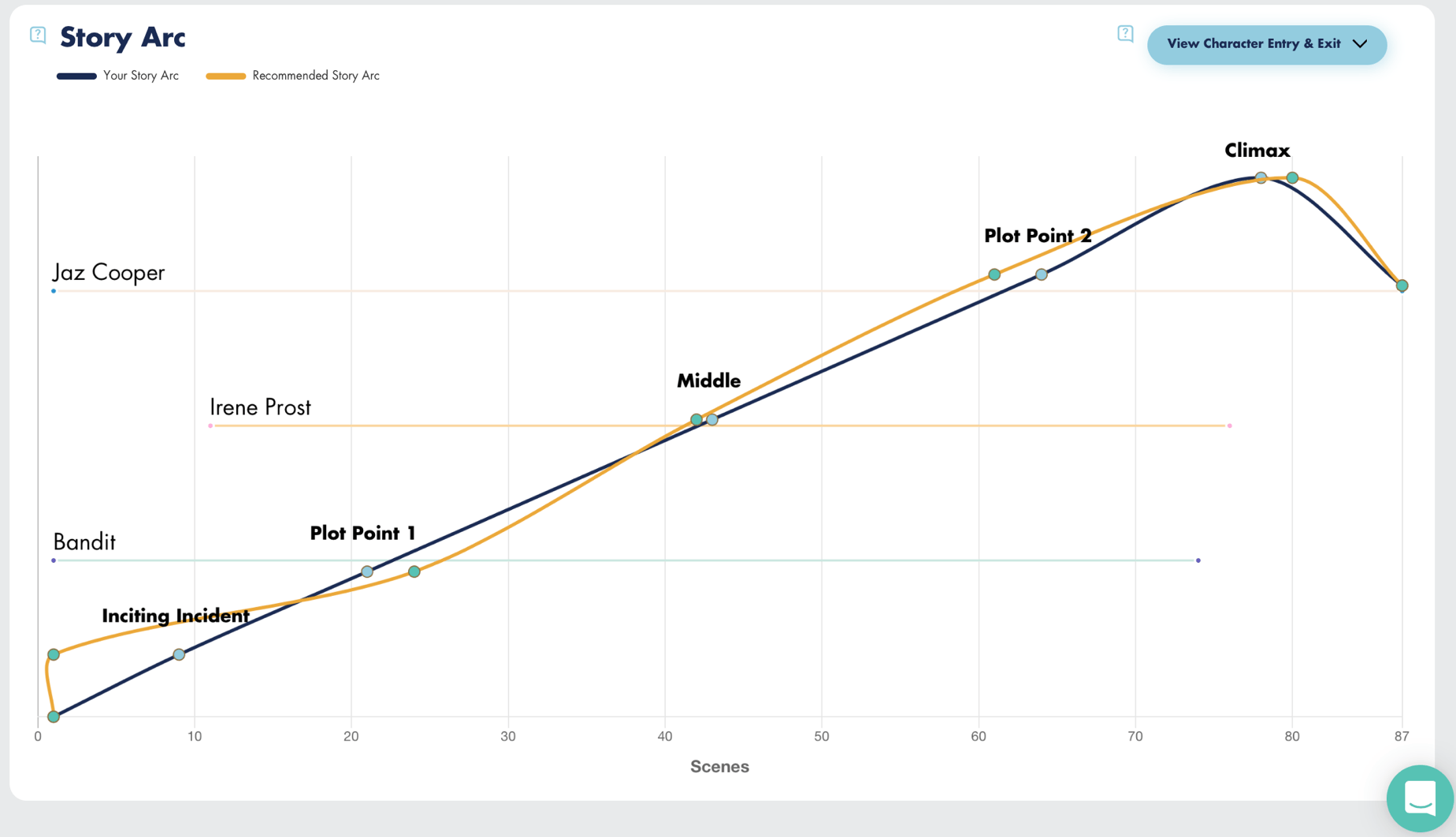
Story Arc Insight in Fictionary
![]()
Resources:
For more on characters and how to connect your readers to your characters, check out:
Choosing a Point of View Character is a Big Decision
How To Avoid Plot Holes— Character Arcs (Part II)(Opens in a new browser tab)
How to Write Character Arcs by KM Weiland
![]()
StoryTeller is creative editing software for fiction writers. Transform your story, not just your words. Successful stories depend on your ability to edit, improve, and revise your work. Only when you master story editing, can you master storytelling.
Why not check out Fictionary’s StoryTeller free 14-day trial and tell powerful stories?

